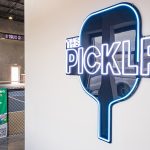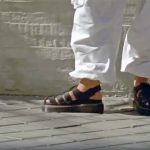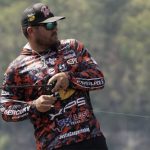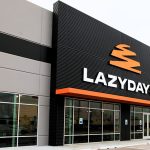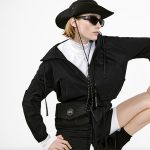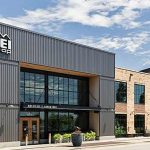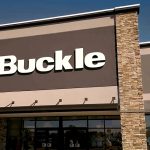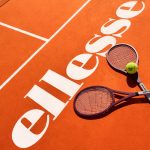Wall Street analysts seemed to be working overtime the last few weeks, apparently trying to justify some recent comments made by a few that athletic footwear is on the decline. For instance, Merrill Lynch analyst Michelle Graham downgraded Brown Shoe to “neutral” saying “fashion momentum in athletic footwear is slowing” and anticipated markdown pressure at the mall. While a few retailers did report a slowdown in their Q2 sales of sneakers, most of the decrease or softness can be attributed to a shift in product mix, classification of product, or the shift of the back-to-school season by as much as four weeks.
To understand some of the macro issues at play, one only has to look as far as the weather to understand the increase in sandal sales over the last sixty days after a summer that came way too late for retailers. It only stands to reason that the consumer will go open-toe when the mercury heads and stays north of 90 degrees in most of the country in July and August. According to SportScanINFO, sales of sandals for the back-to-school period are up by nearly two-thirds.
Second, the shift to low-profile and running looks is well underway. As exemplified in the reports from the family footwear guys last week, the Euro casual look that Puma and others have been capitalizing on in coastal America has finally made it to the middle of the country (and a big slice of teen open-to-spend). Again, according to SportScanINFO, Puma sales for the critical back-to-school period are up by more than half. Sales of Skechers were also up more than 20% during the last six weeks.
Unfortunately, the shift in consumer spending at at least one retailer takes these sales out of athletic and drops them into the juniors and young mens basket. Next, well hear analysts touting a “return to casual” as a lifestyle look. Sports Executive Weekly has been watching this trend for more than a year as the baggy-ass look gives way to narrower denim looks. The Fusion and running silhouettes make perfect sense. Sales of running footwear are up more than 20% according to SSI. Asics sales were up by about a third; Nike running was up more than 25%; and adidas running was up by 15%.
The last major issue, and one that should give retailers and vendors some pause, is the shift in the back-to-school selling (or buying) season. The market will need to adjust open-to-buy for BTS as it has for Christmas, and acknowledge that the shift in the selling window is indeed a permanent one. The move to buy-now, wear-now did not creep up on the market in the last year. It has been happening for over a decade as the consumer becomes more savvy and fads and trends move ever more quickly through their lifecycle. Information at the disposal of the consumer requires vendors and retailers to turn on a dime to react. Kids are waiting to get to school before pulling the trigger (I know, poor choice of words) on new footwear and apparel, a fact the market will need to learn to live with and hopefully feed.
Sales for the last two weeks of July were weak (as they have been for the last several years) but began to show momentum as we approached Labor Day. Shoe Carnival president and CEO Mark Lemond cited the improving trend as the reason for their improved comp performance in August (see page 4). Unfortunately, one retailers aggressive coupon campaign during the last 10 days of August took some wind out of the collective sales improvement. Anecdotally, retailers tell SEW that they expect the momentum to build into a strong September.
One issue that is evident in the current market is the lack of anything new or exciting to drive the mall business. While the trend to low-profile and running is certainly real, there is a lack of any key items to capture the imagination of the consumer. Shox was getting all the attention last fall, but the scene at the mall is now much more about color-ups and follow-ons to product that was hot last year. Overall sales of Shox products remain strong and grew significantly over last year, but the Shox Cognoscenti issue was a big reason for softness at the mall. The lack of a blockbuster item really hurts the mall business and this year is no different. The tepid results at The Finish Line illustrate the lack of a new key item. One other concern may lie with Foot Locker, as they make adjustments to counter softness in their European stores, a situation that may spill over into the U.S. market. FINL pointed to a more promotional environment in the mall as an issue as well.
SEW has been tracking the trends in athletic footwear each week and each quarter and sees little reason to believe our estimates for 2005 growth should be revised. As we presented at the NSGA Management Conference, we still see athletic footwear growth in the high-single-digit range for the year, with the technical categories trending up in the low-teens.
Based on the most recent SportScanINFO data, athletic footwear sales over the last four weeks are basically growing at the same rate as the YTD period, up about 10% versus the same period last year. Based on the SSI data, the running business is up almost double the rate of the total athletic footwear business for both the year and the last four weeks. Those numbers, coupled with the big quarter (+18% comp for Q2) just posted by Fleet Feet, indicates that the performance trend continues to head in the right direction.
What SEW sees as an issue is the apparent reluctance of sporting goods and athletic specialty retailers to add fuel to the move to fashion athletic. As middle America adopts the look, the market will see more of the track jacket, skinny jeans and Fusion footwear look show up across the country. The kids are already seeing it play out in the magazines they read and the shows they watch and sporting goods has an opportunity to capitalize on the trend. After all, this look is based in sport; and who better to address that need? If 90% of footwear sold at sporting goods is for non-athletic use, why does the apparel mix mostly favor the need for sweat?
If Hibbett Sporting Goods can sell Enyce and other urban brands, and Chicks Sporting Goods can build a business around sportswear, why does the rest of the market limit itself to adidas, Nike, and Under Armour?

